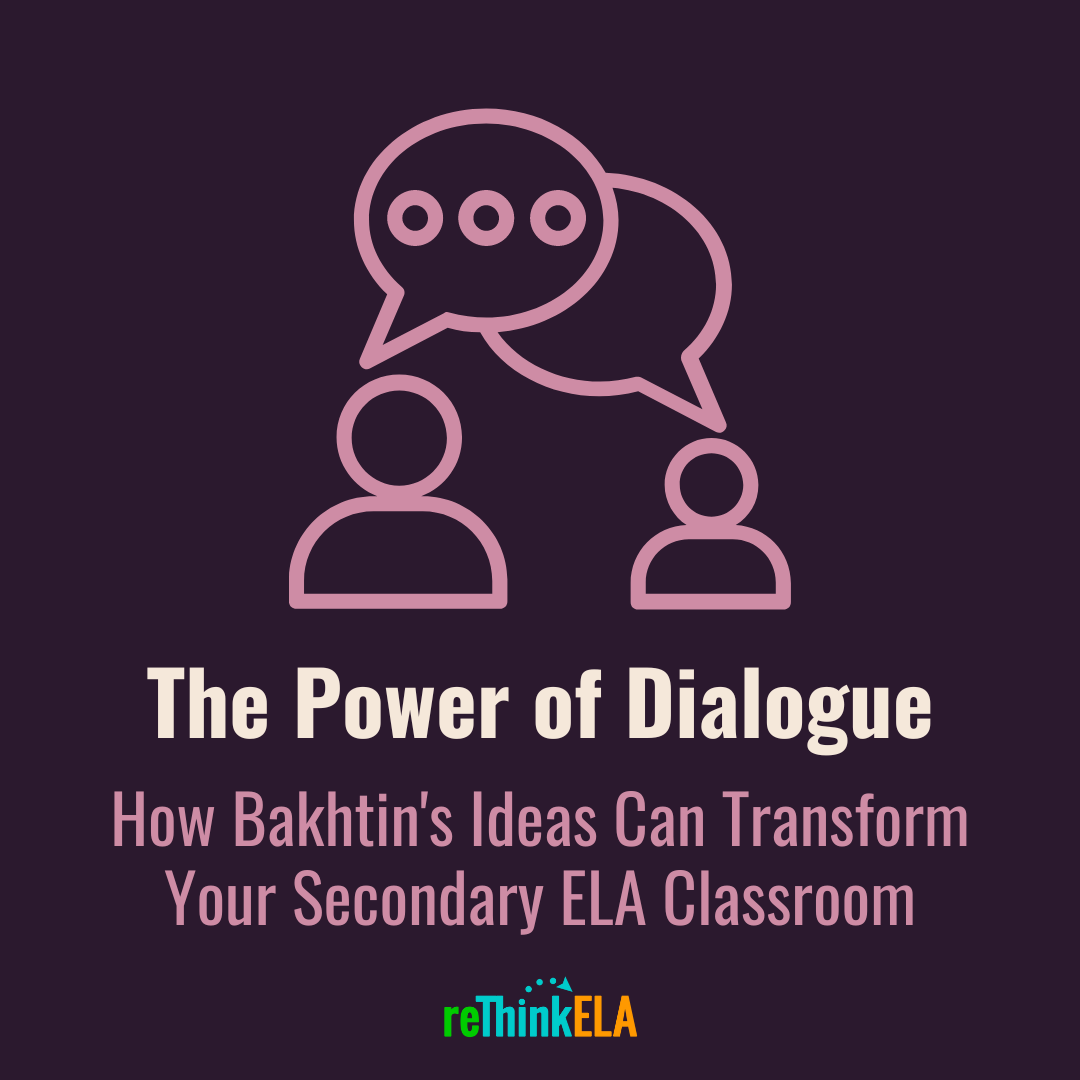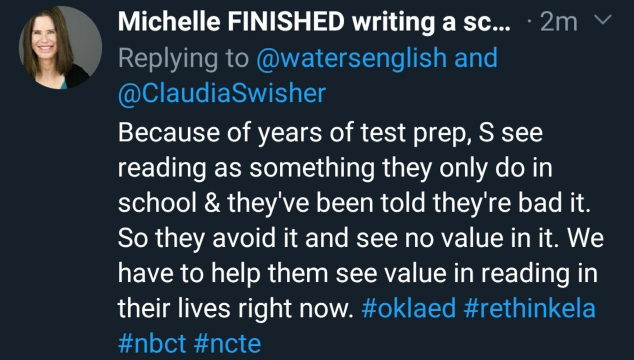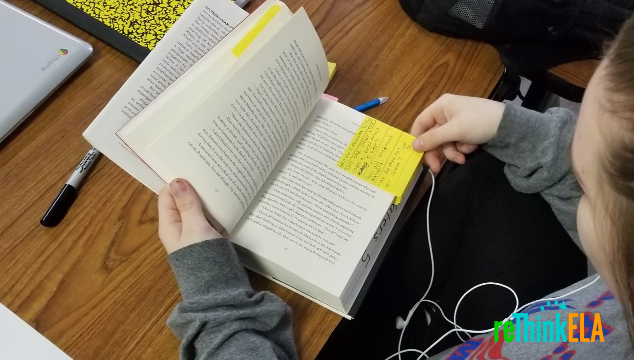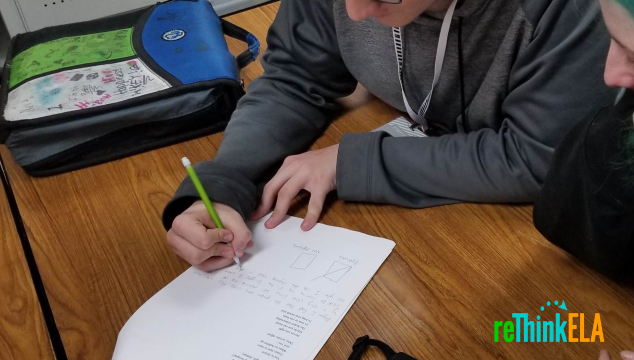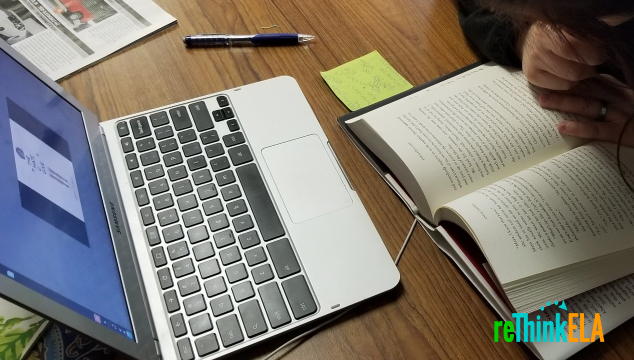If you know anything about teenagers, you know they love to talk. This is completely normal developmentally, but can be incredibly frustrating if this behavior is something you’re problematizing in your classroom. It’s a losing battle and both you and your students will lose, no matter who “wins.”
Instead of fighting your students' natural inclination to talk, it’s better to harness it. Let me give you an example. While I was working on component four of the National Board for Professional Teaching Standards process, I designed a unit based on student-centered pedagogies in my Young Adult Literature class, a master’s level course in the Instructional Leadership and Academic Curriculum program at the University of Oklahoma.
Students chose one of four books and then divided themselves into groups of up to four students. I wanted my students to understand the complex themes in the novels they chose, and I knew that I could not simply lecture on these topics. I needed to create a space where students could explore these ideas in a meaningful way.
Using Marisa Thompson’s TQE method, along with an early iteration of my Reading TRIIPS pedagogy, I implemented a dialogic teaching approach. I started by explaining the process to students and asking them to work with their groups to develop open-ended questions about their novels. I asked them to think about their tie-ins (connections), reactions, inferences, inquiries (questions), predictions, and summaries related to the characters, the plot, and the themes.
At first, students seemed hesitant to share their ideas. Perhaps they were afraid of being judged by their peers or by me? However, as their small group discussions continued, they became more comfortable sharing their thoughts. They began to challenge each other's ideas and to see things from different perspectives.
By the end of the unit and two or three Socratic seminars and small group discussions, students had a much deeper understanding of their chosen novels. Students had clearly developed their critical thinking and perspective-taking skills, which are both part of our state's English Language Arts academic standards for critical thinking and critical reading.
My story is just one example of how dialogic teaching can be used to promote active learning and critical thinking in the classroom.
The theories underpinning dialogic teaching are based on the work of Mikhail Bakhtin, a Russian philosopher who believed that all language is inherently dialogic. This means that language is always in conversation with other voices and perspectives. Bakhtin argued that we can never fully understand a text or utterance without considering the context in which it was created and the voices that it is responding to.
Dialogic teaching is based on these principles. It is a pedagogical approach that emphasizes the importance of dialogue in learning. It is based on the idea that students learn best when they are actively engaged in conversation with the teacher and with each other. Dialogic teachers create a classroom environment where students feel safe to share their ideas, even if they are different from the ideas of others. They also encourage students to question and challenge each other's thinking.
In secondary ELA classrooms, Bakhtin's dialogic thinking can be used to promote active learning and critical thinking skills. More specifically, his theories of language, dialogue, and heteroglossia have been influential in the development of reading and writing pedagogies. Some of the key concepts from Bakhtin's work that have been applied to pedagogy include:
- The dialogic nature of language: Bakhtin argued that language is always in dialogue with other voices, both past and present. This means that when we read or write, we are not simply decoding a static text, but rather engaging in a conversation with the author and with the other voices that have shaped the text.
- The concept of heteroglossia: Heteroglossia refers to the multiple voices and perspectives that are present in any text. This means that texts are not simply monolithic entities, but rather they are complex and contradictory.
- The importance of context: Bakhtin argued that the meaning of a text is always contextual. This means that the meaning of a text can change depending on the reader's background, experiences, and perspective.
By encouraging students to engage in dialogue with texts, teachers can help them to develop a deeper understanding of the texts' meaning and to consider multiple perspectives. This can be done through a variety of activities, such as:
- Socratic seminars: In a Socratic seminar, students engage in a structured dialogue about a text, led by the teacher. The teacher asks questions to help students to explore the text's meaning and to consider different perspectives.
- Literature circles: In literature circles, students form small groups to discuss a text. Each student takes on a specific role, such as discussion leader, summarizer, or questioner. This helps students to develop their own ideas about the text and to share their ideas with others.
- Debates: Debates can be a great way to encourage students to consider multiple perspectives on a topic. Students can be divided into teams to argue for or against a particular viewpoint. This can be a lively and engaging way to learn about different perspectives.
By using Bakhtin's dialogic thinking in their classrooms, teachers can help students to become more active learners and critical thinkers. Students can learn to consider multiple perspectives, to develop their own ideas, and to articulate their ideas clearly. This can be a valuable skill for students in all areas of their lives, both in and out of school.
Here are some additional examples of how Bakhtin's dialogic thinking can be used in secondary ELA classrooms:
- Teaching students to analyze the use of dialogue in literature. Bakhtin believed that dialogue is a key element of all great literature. By analyzing the dialogue in a text, students can learn to understand the characters' motivations, the relationships between the characters, and the author's message.
- Helping students to write persuasive essays. Bakhtin believed that writing is a form of dialogue with the reader. By considering the reader's perspective, students can write essays that are more persuasive and engaging.
- Promoting tolerance and understanding in the classroom. Bakhtin believed that dialogue is essential for building relationships and understanding between people from different cultures and backgrounds. By encouraging students to engage in dialogue with each other, teachers can help them to develop these important skills.
Dialogic teaching can be implemented through dialogic reading, multivoiced writing, and critical literacy.
Dialogic reading
Dialogic reading is a method of reading that encourages students to engage with texts in a dialogic way. This means asking students to consider the different voices and perspectives that are present in the text, and to discuss their own thoughts and reactions to the text.
- Choose texts that are appropriate for the students' level of understanding. The text should be interesting and engaging, and it should have enough complexity to allow for different interpretations. If you need short texts, check out our list of 40 short stories and all the resources we have in our Curated Short Stories Library.
- Start by reading the text aloud to the students. This will help them to follow the story and to get a sense of the different voices and perspectives that are present. You can also provide students with audio adaptations of the text, if they're available. (If you're teaching short stories, I've curated audio adaptations for several short stories. If I don't have the one you need, let me know and I'll look for one for you.)
- Ask questions that encourage students to think about the text. These questions can be about the characters, the plot, the setting, or the themes of the text. The Library includes essential questions you can start with, but I also encourage you to provide space for your students to develop their own questions, as well. Once they’ve had a chance and get into the activity, you will be impressed!
- Encourage students to share their own thoughts and reactions to the text. This can be done in whole-class discussion, small groups, or in individual writing assignments. This is exactly what the type of environment Reading TRIIPS Structured Independent Reading Unit enables you to establish in your classroom.
Multivoiced writing
Multivoiced writing is a method of writing that encourages students to write from multiple perspectives. This means helping students to see how texts are made up of multiple voices and perspectives, and to develop their own writing style that incorporates these different voices.
Students can engage in multivoiced reading and writing in secondary ELA classrooms through several activities:
- Reading and analyzing texts that feature multiple perspectives. After reading the text, have students discuss the different perspectives that are presented in the text. They can also write a short essay in which they compare and contrast the different perspectives.
- Interviewing people from different backgrounds and with different experiences. Students can interview their parents, grandparents, neighbors, or friends. They can also interview people from different cultures or from different walks of life. After the interviews, have students write a short essay in which they share the different perspectives that they learned about.
- Writing in different genres, such as fiction, nonfiction, and poetry. In fiction, students can create characters with different perspectives. In nonfiction, students can write about a topic from different perspectives. In poetry, students can use different voices to create a more complex and nuanced poem.
- Collaborating with peers to write a piece of multivoiced writing. Students can work together to write a play, a short story, or an essay. They can also work together to create a poem or a song.
- Using technology to research and explore different perspectives. Students can use the internet to find articles, videos, and other resources that present different perspectives on a topic. They can also use social media to connect with people from different backgrounds and with different experiences.
By engaging in multivoiced writing, students can develop their critical thinking skills, their ability to see things from different perspectives, and their creativity. They can also learn to communicate more effectively with others.
Critical literacy
Critical literacy is a method of reading and writing that emphasizes the importance of understanding the context of texts and the different ways that texts can be interpreted. This means helping students to understand how the meaning of a text can change depending on the reader's background, experiences, and perspective.
Students can engage in critical literacies in secondary ELA classrooms by:
- Exploring the multiple voices and perspectives that are present in texts. Bakhtin believed that all texts are inherently dialogic, meaning that they are in conversation with other voices and perspectives. By exploring the multiple voices and perspectives in texts, students can develop a deeper understanding of the texts' meaning and can see how they are shaped by different ideologies and power relations.
- Analyzing the way that texts construct meaning. Bakhtin believed that texts do not simply reflect reality, but that they actively construct meaning. By analyzing the way that texts construct meaning, students can learn to see how texts shape our understanding of the world.
- Evaluating the impact of texts. Bakhtin believed that texts have the power to shape our thoughts, feelings, and actions. By evaluating the impact of texts, students can learn to think critically about the messages that texts are trying to convey.
- Using texts to create change. Bakhtin believed that texts can be used to challenge the status quo and to create change. By using texts to create change, students can use their voices to make a difference in the world.
These are just a few examples of reading and writing pedagogies that have been influenced by Bakhtin's theories. Bakhtin's work has had a significant impact on the field of literacy education, and his theories continue to be used to develop new and innovative pedagogical approaches.
Bakhtin's dialogic thinking is a powerful tool that can be used to promote active learning, critical thinking, and tolerance in secondary ELA classrooms. By using these strategies, teachers can help students to become more engaged and thoughtful learners.
